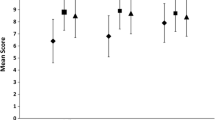Abstract
Undergraduate students harbor a number of misconceptions about the complexity of cancer. Though educational interventions have been shown to promote student learning of various aspects of this ubiquitous disease, to date no studies have evaluated undergraduate student understanding of the Hallmarks of Cancer, a set of core properties that have emerged as the defining characteristics that drive cancer development and progression. This study documents poor baseline knowledge of many fundamental aspects of cancer biology and genetics by 2nd- and 3rd-year undergraduate students, and it evaluates the efficacy of a student-centered project as a pedagogical strategy for improving student understanding of both the hallmarks of cancer and the genetic influences that drive their acquisition by cancer cells. Using genomic and transcriptomic datasets from The Cancer Genome Atlas, students investigated the most common genetic aberrations associated with specific cancer types of interest and then researched the functions of these altered genes in order to link their aberrations with specific hallmark properties of cancer. A pre-/post-project assessment of student understanding of topics related to the hallmarks of cancer demonstrated the efficacy of this approach as a means of educating undergraduate students about core cancer concepts.


Similar content being viewed by others
Data Availability
Primary data from individual responses to the assessment instrument described herein will be made available upon request. Individual respondents will remain anonymous. All other data and materials from this study are included in this report.
References
Hanahan D, Weinberg RA (2000) The hallmarks of cancer. Cell 100:57–70
Hanahan D, Weinberg RA (2011) Hallmarks of cancer: the next generation. Cell 144:646–674
Hashim TJ (2000) Adolescents and cancer: a survey of knowledge and attitudes about cancer in eastern province of Saudi Arabia. J Family Community Med 7:29–35
Gansler T, Strollo S, Fallon E, Leach C (2019) Use of complementary/integrative methods: cancer survivors’ misconceptions about recurrence prevention. J Cancer Surviv 13:418–428
Morère JF, Viguier J, Couraud S, Brignoli-Guibaudet L, Lhomel C, Pivot XB, Eisinger F (2018) Awareness and misconceptions of breast cancer risk factors among laypersons and physicians. Curr Oncol Rep 20(Suppl 1):15
Sariego J, Sariego LB, Matsumoto T, Vosburgh M, Kerstein M (1992) Cancer knowledge and misconceptions among college undergraduates: a pilot study. J Cancer Educ 7:73–78
Estaville L, Trad M, Martinez G (2012) University student understanding of cancer: analysis of ethnic group variances. J Cancer Educ 27:580–584
Cocchio S, Bertoncello C, Baldovin T, Fonzo M, Bennici SE, Buja A, Majori S, Baldo V (2020) Awareness of HPV and drivers of HPV vaccine uptake among university students: quantitative, cross-sectional study. Heal Soc Care Community 28:1514–1524
Hwang LL (2013) Cancer awareness changes after an educational intervention among undergraduate students. J Cancer Educ 28:247–253
Hwang LL (2018) Educational intervention on undergraduate cancer awareness and self-directed learning. J Cancer Educ 33:592–601
Asoodeh MH, Asoodeh MB, Zarepour M (2012) The impact of student - centered learning on academic achievement and social skills. Procedia - Soc Behav Sci 46:560–564
Connell GL, Donovan DA, Chambers TG (2016) Increasing the use of student-centered pedagogies from moderate to high improves student learning and attitudes about biology. CBE Life Sci Educ 15:ar3
Lyles JK, Oli M (2020) The student-centered classroom: the new gut feeling. FEMS Microbiol Lett 367. https://doi.org/10.1093/femsle/fnaa191
Zewail-Foote M (2020) Using student-centered approaches to teach the biochemistry of SARS-CoV-2. Biochem Mol Biol Educ 48:655–656
Cerami E, Gao J, Dogrusoz U, Gross BE, Sumer SO, Aksoy BA, Jacobsen A, Byrne CJ, Heuer ML, Larsson E, Antipin Y, Reva B, Goldberg AP, Sander C, Schultz N (2012) The cBio cancer genomics portal: an open platform for exploring multidimensional cancer genomics data. Cancer Discov 2:401–404
Tang Z, Li C, Kang B, Gao G, Li C, Zhang Z (2017) GEPIA: a web server for cancer and normal gene expression profiling and interactive analyses. Nucleic Acids Res 45:W98–W102
Armbruster P, Patel M, Johnson E, Weiss M (2009) Active learning and student-centered pedagogy improve student attitudes and performance in introductory biology. CBE Life Sci Educ 8:203–213
Schneider KR, Bickel A, Sorrison Shetlar A (2015) Planning and implementing a comprehensive student-centered research program for first-year STEM undergraduates. J Coll Sci Teach 44:37–43
Freeman S, Eddy SL, McDonough M, Smith MK, Okoroafor N, Jordt H, Wenderoth MP (2014) Active learning increases student performance in science, engineering, and mathematics. Proc Natl Acad Sci U S A 111:8410–8415
Hargadon KM (2016) A model system for the study of gene expression in the undergraduate laboratory. Biochem Mol Biol Educ 44:397–404
Considine JR, Mihalick JE, Mogi-Hein YR, Penick-Parks MW, Van Auken PM (2017) How do you achieve inclusive excellence in the classroom? New Dir Teach Learn 2017:171–187. https://doi.org/10.1002/tl.20255
Acknowledgments
Clinical data utilized in this project was generated and made publicly available by the TCGA Research Network: https://www.cancer.gov/tcga. The author also wishes to thank the undergraduate students who participated in this study.
Author information
Authors and Affiliations
Contributions
KMH was solely responsible for the design, implementation, and reporting of data from this study.
Corresponding author
Ethics declarations
Conflict of Interest
The author declares that they have no conflicts of interest.
Ethics Approval
This study was approved by the Hampden-Sydney College Human Subjects Research Review Committee.
Consent to Participate
Informed consent to participate in this study was obtained from all undergraduate students involved in this assessment.
Consent for Publication
Informed consent for the reporting of assessment data was obtained from all undergraduate students participating in this study.
Code Aavailability
Not applicable.
Additional information
Publisher’s Note
Springer Nature remains neutral with regard to jurisdictional claims in published maps and institutional affiliations.
Supplementary Information
Online Resource 1
Detailed project description, including step-by-step instructions for use of the cBioPortal for Cancer Genomics and GEPIA web tools (DOCX 1500 kb)
Online Resource 2
Sample student project submission (DOCX 20 kb)
Rights and permissions
About this article
Cite this article
Hargadon, K.M. Using The Cancer Genome Atlas as a Tool to Improve Undergraduate Student Understanding of Cancer Genetics and the Hallmarks of Cancer Progression. J Canc Educ 37, 1357–1363 (2022). https://doi.org/10.1007/s13187-021-01962-y
Accepted:
Published:
Issue Date:
DOI: https://doi.org/10.1007/s13187-021-01962-y




